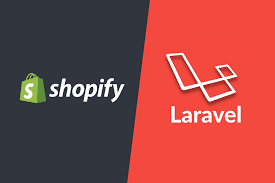In today’s dynamic eCommerce environment, businesses often require custom solutions to meet their unique operational needs. Shopify, one of the most popular eCommerce platforms, is powerful but can sometimes be limiting when it comes to custom features. This is where Laravel Shopify integration comes in, combining Shopify’s flexibility with Laravel’s robust PHP framework. Integrating Laravel with Shopify allows developers to build custom applications, streamline store management, and enhance functionality. In this guide, we’ll walk through the steps to integrate Laravel Shopify for creating custom solutions.
Prerequisites for Integration
Before diving into the integration, there are a few prerequisites to set up. Both Laravel and Shopify come with distinct requirements that need to be fulfilled for a smooth integration process.
Tools and Technologies Needed
To integrate Laravel with Shopify, you’ll need to have the following tools and software:
- A working installation of Laravel.
- A Shopify store (preferably with a development environment for testing).
- PHP and Composer installed on your machine.
- Shopify’s API access for connecting Laravel with Shopify.
Setting Up a Shopify Store
If you haven’t set up a Shopify store yet, you’ll need to do so. Head over to Shopify’s website, create an account, and follow the steps to launch a development store. A development store allows for the testing of custom solutions before deploying them on a live environment.
Setting Up a Laravel Project
For Laravel, make sure you have PHP and Composer installed. You can start a new Laravel project by running the following command in your terminal:
composer create-project --prefer-dist laravel/laravel shopify-integration
Once you have Laravel installed, you can move on to understanding how to work with Shopify’s API.
Understanding Shopify API
The backbone of integrating Laravel with Shopify lies in understanding and utilizing Shopify’s API. Shopify’s API provides access to various store features, including managing products, orders, customers, and more.
What is the Shopify API?
The Shopify API is a powerful set of tools that allows developers to access and modify Shopify stores programmatically. It supports both REST and GraphQL, enabling interaction with Shopify’s resources like products, orders, collections, and customers.
Key Features of Shopify API for Integration
The Shopify API offers several features that are critical for integration with Laravel:
- Product Management: Create, update, and delete products.
- Order Management: Access and manage orders in real-time.
- Custom Applications: Build custom apps tailored to specific business requirements.
- Webhook Support: Receive notifications on specific store events for real-time updates.
Step-by-Step Guide to Laravel and Shopify Integration
Integrating Laravel with Shopify requires connecting your Laravel application to Shopify’s API and then handling data exchanges.
Installing Necessary Packages in Laravel
To start, you need to install a package that simplifies Shopify API interaction within Laravel. A popular choice is the ohmybrew/laravel-shopify package, which provides out-of-the-box functionality to connect Laravel and Shopify:
composer require ohmybrew/laravel-shopify
Once installed, configure the package by publishing the configuration files:
php artisan vendor:publish --tag=shopify-config
Connecting Laravel to Shopify via API
Now that the necessary packages are installed, you can connect Laravel to Shopify by setting up your API keys. You’ll need to create a Shopify app to generate these keys. Go to your Shopify admin panel and navigate to Apps > Manage Private Apps to create a new private app.
Configure your .env file in Laravel to include the Shopify API credentials:
SHOPIFY_API_KEY=your_api_key
SHOPIFY_API_SECRET=your_api_secret
Authenticating Shopify Requests
Authentication is essential for ensuring that your Laravel app securely communicates with Shopify. The laravel-shopify package handles this with ease by providing middleware that validates Shopify’s HMAC signature on incoming requests. This ensures that the requests are legitimate and from Shopify itself.
Customizing Shopify Using Laravel
Once Laravel is connected to Shopify, you can begin building custom solutions tailored to your business needs.
Adding Custom Features to Shopify
Laravel’s flexibility allows you to extend Shopify’s default functionality. For instance, you can create custom dashboards in Laravel for store owners to view advanced reports and analytics that are not available on Shopify.
Managing Orders and Products from Laravel
With Laravel’s integration, you can manage Shopify’s products and orders directly from your Laravel app. This allows you to build custom order management systems, bulk update product details, or even automate the fulfillment process using Laravel’s task scheduling capabilities.
Building Custom Shopify Themes with Laravel
Laravel also makes it possible to manage Shopify themes and add custom design elements. By utilizing Shopify’s Theme Kit, you can sync themes between Shopify and your Laravel environment, allowing for full control over front-end customization.
Handling Webhooks in Laravel
Webhooks are a critical component when working with real-time data synchronization between Shopify and Laravel.
Setting Up Webhooks for Shopify
Webhooks allow Shopify to send notifications to your Laravel app whenever an event, such as a new order or product update, occurs. You can set up webhooks in your Shopify admin panel under Settings > Notifications.
Processing Webhook Requests in Laravel
Once a webhook is triggered, Laravel can capture and process the incoming data. You can create a dedicated controller in Laravel to handle webhook requests. Here’s a basic example of processing webhook data:
public function handleShopifyWebhook(Request $request)
{
$data = $request->all();
// Process webhook data here
}
Automating Tasks with Webhooks
Using Laravel’s task scheduling and queuing system, you can automate responses to Shopify’s webhooks, such as updating product inventory or sending email notifications when new orders are placed.
Testing and Debugging the Integration
Testing is a crucial part of the integration process to ensure everything works as expected.
Testing the Integration Locally
You can use tools like Postman to simulate API requests between Laravel and Shopify. Additionally, Laravel’s built-in testing framework can be used to write unit tests for the integration.
Common Issues and How to Solve Them
Some common issues you may encounter during integration include:
- API rate limits: Shopify imposes limits on how many API calls can be made within a given timeframe.
- Webhook validation errors: Ensure that Shopify’s HMAC signature is properly validated in Laravel to avoid security issues.
Best Practices for Laravel-Shopify Integration
To ensure a robust and secure integration, following best practices is essential.
Optimizing API Calls
Shopify has API rate limits, so it’s important to optimize your API calls to avoid hitting these limits. Use caching where possible to store frequently accessed data, and batch API calls to reduce the number of requests.
Ensuring Security and Data Integrity
Make sure to secure the integration by validating Shopify’s HMAC signatures on incoming requests and using SSL for encrypted communication. Additionally, always sanitize and validate data before storing it in your Laravel application.
Scaling the Integration for Large Applications
If your store handles large volumes of data, you may need to scale the integration by utilizing Laravel’s queues and job processing to manage tasks efficiently.
Conclusion
Integrating Laravel with Shopify opens the door to endless customization possibilities, allowing businesses to tailor their Shopify stores to meet specific needs. By leveraging Laravel’s power and Shopify’s flexibility, developers can create seamless, custom eCommerce experiences that enhance both store management and user interaction.




